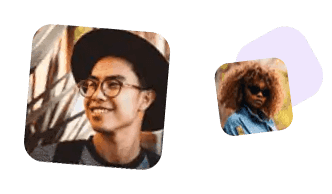- Work with the Product Management team to understand the relevant market/competitors/end-users, and influence the definition of the product vision and feature-level roadmap,
- Collaborate with stakeholders (including internal subject matter experts, internal end-users) and members of the scrum team(s) to translate this roadmap into a user-story backlog which can be consumed and implemented by one or two engineering teams,
- Ensure the backlog is in a “clean” state at all times, maintaining a clear epic/feature/story hierarchy, triaging new requirements/defects efficiently, and appropriately tagging backlog items which qualify for capitalisation and R&D tax relief,
- Articulate this backlog into quarterly release increments, working with the team to ensure the upcoming quarterly increment is appropriately defined and planned, covering the various necessary dimensions involved in the development of the product under consideration (e.g. functional and non-function product requirements, but also research work, as well as infrastructure and service-related requirements),
- Continuously re-prioritise the user-story backlog considering the direction from the Product Manager, feedback from the team, the value of the work item (effort vs. benefit) and potential dependencies between stories,
- Ensure there is at least 1-2 sprints worth of user stories defined against the agreed “Definition of Ready” (DoR), in particular by working with the QA engineer(s) to define clear and complete acceptance criteria,
- If necessary, produce the necessary artefacts to meet the DoR (e.g. wireframes/UI mockups),
- Provide input to the sprint planning process, ensuring the scrum team is sufficiently familiar with the proposed stories upfront to facilitate a smooth planning process,
- Coach and support the scrum team during execution of the sprint and the release increments by providing clarification or further direction where necessary, and taking an active role in mitigating impediments,
- Formally accept/reject user stories implemented by the team once they meet the “definition of done”, Contribute to the production of internal or external product documentation, vision
- Keep abreast with Agile/Scrum best practices and new trends, and as appropriate, participate in sprint planning meetings, daily stand-ups, sprint retrospectives, and other scrum of scrum ceremonies, striving to continuously improve the team velocity, its processes and engineering practices.
- Extensive years of experience as an Engineering Product Owner leading one or two scrum teams developing commercial B2B/B2C applications, or of subsystems of such applications,
- In-depth understanding of the Agile software development lifecycle in a commercial/production environment,
- Hands-on experience managing all stages of the product life cycle, from concept to productisation,
- High attention to detail and high quality standards whilst being pragmatic and delivering at pace,
- Strong organisation skills, ability to balance multiple priorities and to provide clear status updates,
- Strong written and verbal communication skills, ability to influence senior stakeholders,
- At ease working in a team environment, can provide and receive constructive criticism,
- Sharp analytical and problem solving skills,
- Creative thinker with a vision.
- Formal Product Owner/Product Management training and accreditations,
- Familiarity with scaled Agile frameworks (e.g. SAFe),
- Hands-on experience with the production of wireframes (e.g. using Balsamiq),
- Prior software development experience,
- General knowledge of the Insurance industry,
- Open mindset and desire to progress towards a Product Management role in the future,
- Degree-educated with Computer Science, Engineering, Mathematics or relevant discipline

